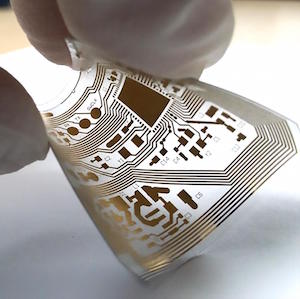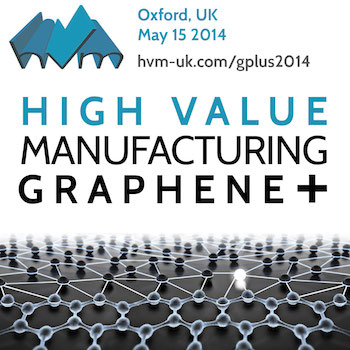Conference homepage | Organiser Homepage | HVM10th Speaker Biographies | HVM10th legacy page
The feedback from senior delegates at the HVM Conference on 14 November was very positive, praising the quality of speakers, networking, business development value, and briefing content.
Summary of HVM 10th Anniversary Conference
The day began with a short talk from HVM strategy consultant and organiser Dr Justin Hayward in which he noted that Britain was on top of the world when it came to countries with over 10 Olympic Gold-medal per million inhabitants scores. This has been effected through lottery-funding, a form of funding that is effective and voluntary.
Justin also argued the points that government spending in the UK has been rising since World War II to a level well over 40% of GDP, and that this may be resulting in difficulties with releasing the potential of HVM from the UK.
Justin went on to note that the private sector has been becoming more confident in difficult times as it struggles to enable earlier-stage HVMs to find funding and grow without government intervention or bank or financial VC finance, instead working with angels, angel groups, superangels, corporate investors, large channel customers and crowdfunding while adapting business models so as to reduce the level of funding needed before testing the market.
Professor Sir Mike Gregory CBE, Head, IfM opened the conference as chairman that “manufacturing was back in fashion”. Sir Mike was upbeat in his appraisal of developments around HVM by the private sector in partnership with the government through the seven centres of the HVM catapult, which cover half of the 22 British competences listed in Sir Mike’s IfM report for the TSB in 2012.
After Sir Mike the audience enjoyed hearing from Will Barton, TSB Head of Manufacturing, details of the success story of Oxford Catalysts, going from an idea around Fischer Tropfe processes for production of clean energy and difficulties to a globally operating company in eight years.
Following this, Phil O’Donovan, a well-known entrepreneur and co-founder of CSR plc, discussed the fabless manufacturing business model and how this enables companies to scale yet keep on top of design and required in-house expertise as returns were to be dealt with by CSR rather than the manufacturer. Phil also said that tax for SMEs should be simple, founder-friendly, staff-friendly and stable, a comment which received nods of approval from many. He noted that the high growth “CSR ignored government and eventually they ignored CSR plc too”. CSR plc quickly went to over 1000 staff and became the market leader in bluetooth with a USD1 billion plus market valuation.
Sir Robin Saxby was next up, in a fantastic opening session. Sir Robin showed the now-famous “SWOT” analysis slide of the ARM business in 1990, at which point it consisted just of the 11 engineer founders and Sir Robin. Given ARM’s dominance now, the SWOT’s contents are an obvious source of great humour! But the point was made strongly that startups should take such analyses seriously. He discussed how SMEs can learn from larger customers’ needs. Startups, he asserted, should try to hire the best team and advisors as soon as possible and motivate themselves through share options in the company. Sir Robin finished by talking briefly about some of the technology startups he has invested in.
Plastic Logic, one of the headline sponsors of the 10th Anniversary HVM Conference, were represented by their new CEO Indro Mukerjee. Indro talked about the industrial revolution that is 3D printing, and noted that Plastic Logic was moving out of stealth mode.
Tonejet, another headline sponsor, spoke through CEO Ray Southam of their successes in bringing from invention to market the world’s first full colour photographic-quality digital can printer, with all the implications this has for the market for promotional cans.
Later in the day there were further keynote talks from an array of speakers, including 2012 Medicine Nobel Prize winner, Sir John Gurdon, who spoke of his “blue sky research” leading to reversible cells and of his educational experiences which to his teacher seemed unpromising to say the least! The audience was spellbound by this talk.
Nick Coutts of CIR Strategy, organiser and sponsor, gave a world-class discussion of Routes to Value, as applied to HVM, which he has pioneered.
Dick Elsy, the new CEO of the HVM Catapult talked about the seven centres across the UK and of government and private sector funding, and how these centres are enhancing advanced manufacturing through engagement with SMEs.
Sir Michael Marshall returned to the HVM conference with an interesting talk covering HVM Successes in Cambridge, and of how his family’s business has grown from a humble chaffeur startup in 1909 to a billion pound plus company in aerospace, automotive, specialist vehicles and owning the airport.
A very strong final panel consisted of Lord Sainsbury of Turville, Sir Michael Marshall, Dick Elsy, Nick Coutts and Professor Sir Mike Gregory CBE. Quite a group! The discussion will be summarised by CIR Strategy at the legacy website and announced first to delegates attending.
The upshot of the panel was a general positivity about what High Value Manufacturing is achieving in Britain and what the future holds for an efficient, well-supported competitive economy with mutilple key advantages in manufacturing.
Please keep an eye on www.hvm-uk.com for further news, reports and conferences on HVM.
Conference homepage | Organiser Homepage | HVM10th Speaker Biographies | HVM10th legacy page


